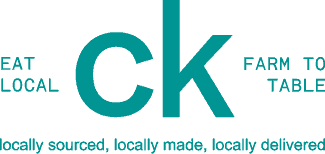
This may or may not be the first time you’ve heard this – that there are many similarities between the fitness industry and managing your money.
As a matter of fact, it was a fitness infomercial that inspired the best-selling book and wildly popular cash management system, Profit First, by Mike Michalowicz.
Below are just 5 ways that I have found the two to be connected and possibly a ‘fresh look’ on how to achieve your money, or fitness, goals.
#1: Be Ready for Change
You must truly be ready for change. It’s not enough to just want the change, you must be ready to commit to changing. It’s easy to say “I’m ready to be skinny” or “I’m ready to make some money” but actually being ready to make a change – well that’s a different ballgame.
If you’re generally not good with change, breaking habits, or doing things differently, then this could be a struggle for you and may cause frustration. Of course, the flip side of that is if nothing changes, then nothing changes. If you truly want to be fit, or if you truly want to be better about managing and possibly saving your money, then the best way to do that is to embrace change!
#2: Slow & Steady Wins Every Time
Sadly, you most likely will not lose 10 pounds in the first week (I wish). Similarly, you probably won’t pay down $10,000 worth of debt, or have $10,000 in savings, the first week either.
Rather – slow, gradual, positive changes will move you in that direction and help to create the momentum to your goals. Get out and walk the dog a few days a week, find a yoga or boxing class and commit to going once or twice a week. Likewise, signup for a remote savings account and setup an auto-withdrawal of $10 or $25 a week, or commit to bringing a healthy lunch to work (instead of eating out) a couple of days a week (saving both money and your health). While taking a walk around the neighborhood or saving $10 a week may not seem like much, as long as it’s consistent and steady, the results will begin to appear.
#3: Be Accountable
If you’re one of those rare people who can commit to something and stick to it no problem, then this should be a piece of cake for you. However, most of us need a little push, or assistance, to keep us accountable. For example, I know that I get a much better workout when I attend a fitness class, or work with a trainer, than I have just going about it alone. The same can be said regarding controlling your finances. Especially in business, the business owner is usually emotionally tied to the business, and the money that runs through the business, so that they are not always the best person to make certain ‘money’ calls within the business. However, if that person/business works with a professional, an accountant or bookkeeper or Profit First Professional, then they may be held accountable to making the best financial decisions to reach their goals and keep them on track.
#4: Create A Routine! Make It A Habit
If your goal is to work out more, then set a workout routine that is easily attainable for you whether it happens in the morning, afternoon, or night – whether it’s a walk, a class, or some time at the gym – but do it so that it would be hard to make excuses NOT to do it. Having a fixed or set schedule helps to get the routine started and makes it easier to maintain.
And it’s the same with your finances! As I mentioned earlier, setup an online savings account (there are many banks offering no fee no minimum high interest online savings accounts – I like Synchrony Bank and American Express Savings) and setup an auto-withdrawal for a weekly or bi-weekly set amount that you can live with. Not too much that you can’t pay your bills, and not too little that you’ll start to think it’s not worth it, but the right amount can be anywhere between $10/week to $100/week depending on your personal situation and goals. Set it and forget it.
If you want to get a little fancier, use the Profit First method where you setup different accounts, nickname them for their uses, i.e. mortgage, groceries, kids, vacation, etc., and slice up every paycheck proportionately into these accounts. Now you’ve got an instant, real-time, budget!
In any event, do what works for you!
#5: Make A Game Out Of It
You are far more likely to stick to something if you are actively engaged in it. This is why I find fitness classes are the best way for me to get in the most bang for my fitness-buck, so to speak. I am actively engaged in the class and I don’t want to look like a slacker, so I do my best to keep up and finish the class which then produces a really good workout for me. If I take a particularly challenging cardio class, I may have to take a break after 20 minutes, catch my breath, and continue. If that’s the case, then the next time I take that class, I will make it a goal to make it to 25 minutes before I take a break, then 30 minutes and so on.
In money speak, I may take that $10/week auto-savings-withdrawal to $15/week and see how I manage, then $20/week and so forth.
If I setup separate accounts, I may set a goal to have $2000 in my ‘Vacation Account’ by a certain date. I will then move as much money as I can into that account until I hit my goal. If I achieve that goal with relative ease, I’ll be psyched! And then I may increase that amount (and go on a better vacation) or I may try it with a ‘Bathroom Remodel’ account or ‘Christmas 2019’ account, you get the point.
In summary, change isn’t always easy, but it is absolutely necessary if you want CHANGE! And it also doesn’t have to be back-breaking, life-altering, craziness. Small, steady, consistent wins can make all the difference and truly drive momentum toward your goals.








Leave A Comment